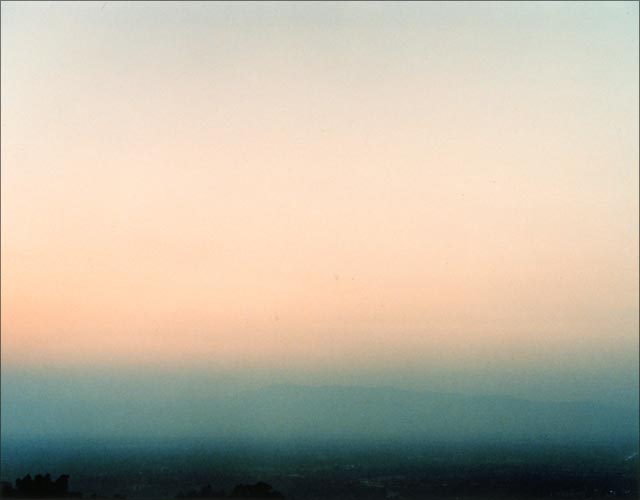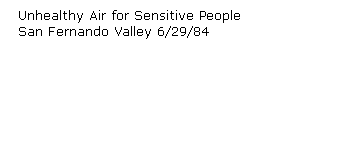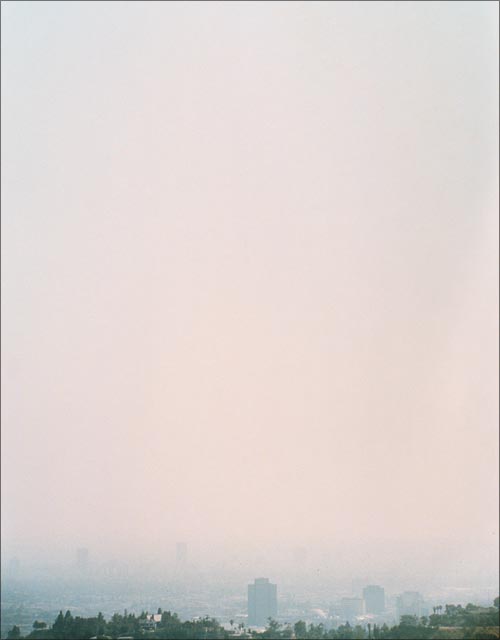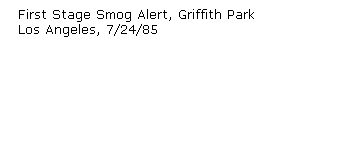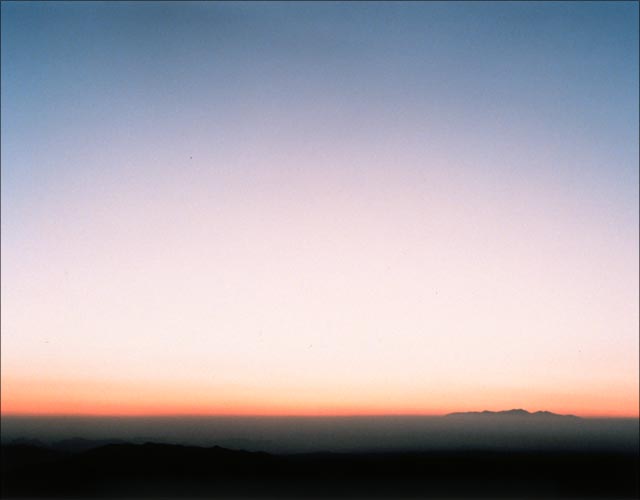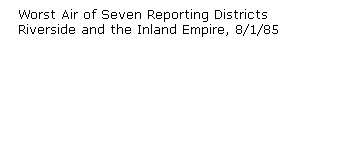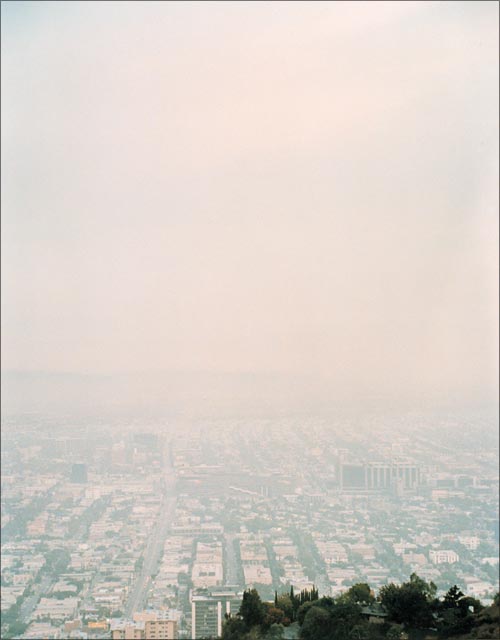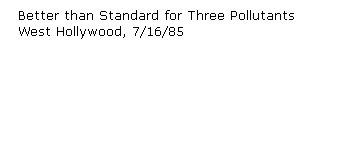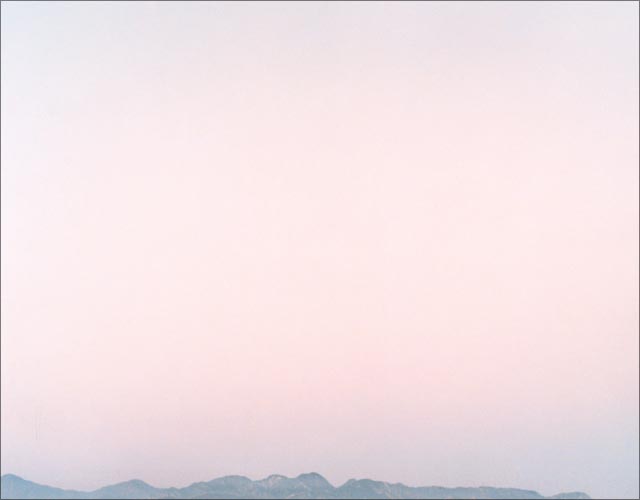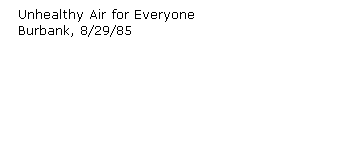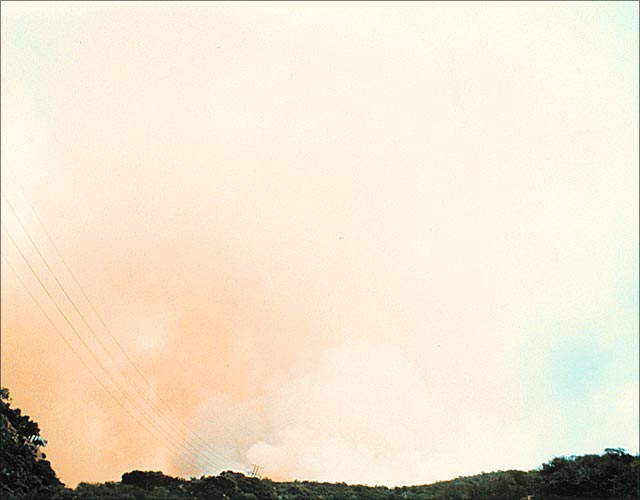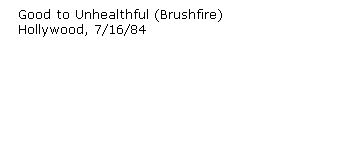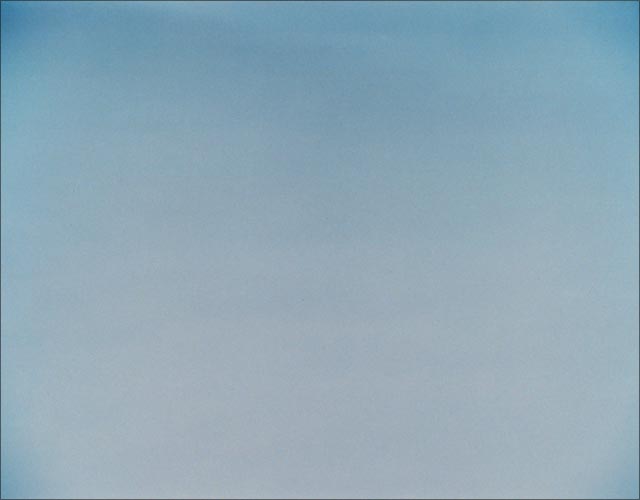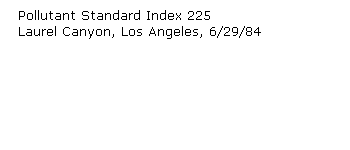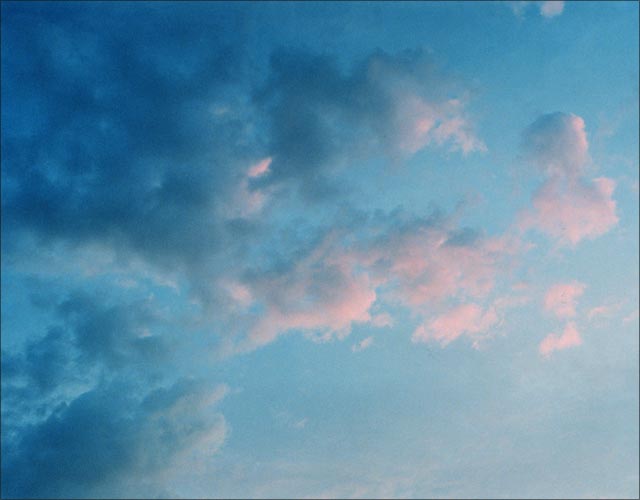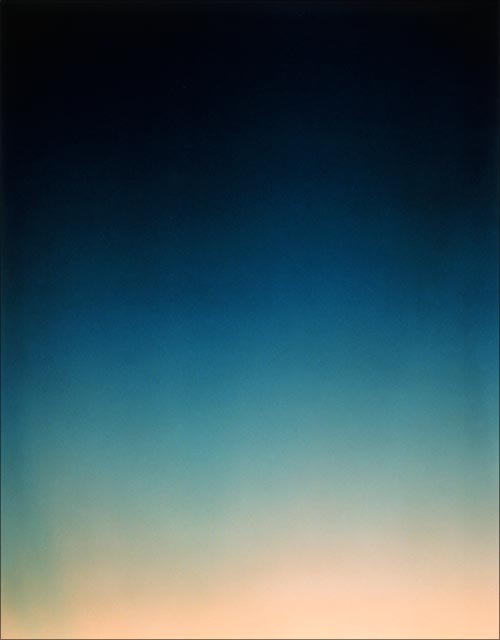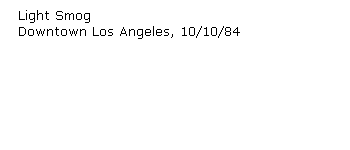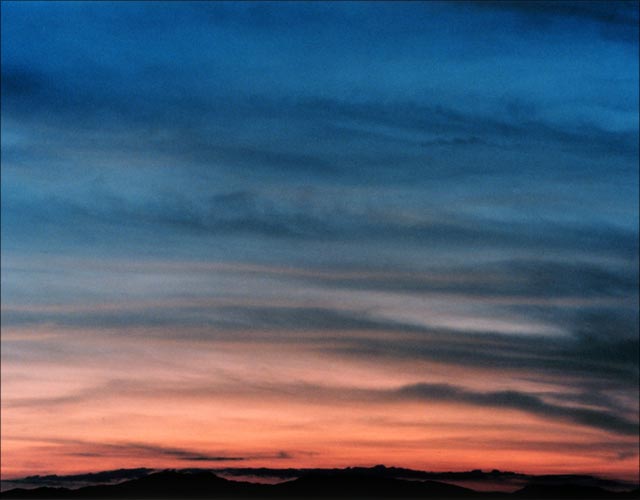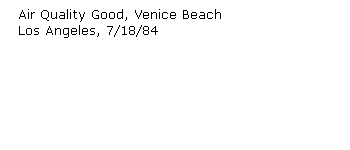| |
This
project uses an idea for titling a set of pictures borrowed
from photo-derived works by John Baldessari, some of whose
pieces are made
from disparate juxtaposed photographs titled with their literal
subjects (e.g.
Fire, Money, Water, Sex / Planets, Chairs,
Observer, White Paper / Midget, Bigman, Octopus ). I
wanted to expand the idea from titling single pieces to titling
a four-part project. 
I began the joined-frame Slag panoramas
while teaching workshops among the ruins of abandoned mining sites
near Cripple Creek at the Victor School, Victor, Colorado, 1984–1985.
I was familiar with David Hockney's “joiners” and was
pleased to discover that my use of joined images made the up-and-down
lineup of the frames mirror the physical layout and architecture
of a site.
The Smog photographs
of Los Angeles skies, titled with the day's smog report, seems
to me a perversely ironic L.A. variant of Alfred Stieglitz's famous Equivalents. However
my thinking and vision at the time was more inspired by the painted
skies of Ed Ruscha and Joe Goode than by Stieglitz's Songs
of the Sky.
Stars was
to be lengthy exposures of the night sky and distant horizon,
made with a camera attached
to a telescope on a motorized
equatorial mount, so that the stars would appear sharply focused
while distant lights of habitation would show up as circular streaks—thus
representing the spin of the Earth against the background of
the cosmos.
Snow was
to be photographs of white objects in snow—a photographic
tonal challenge.
I did not make either the Stars or Snow photographs
which remain entirely conceptual. If another photographer would
like to make photographs that develop these ideas, I would
be pleased to include a link to that person's pictures.
|
|
